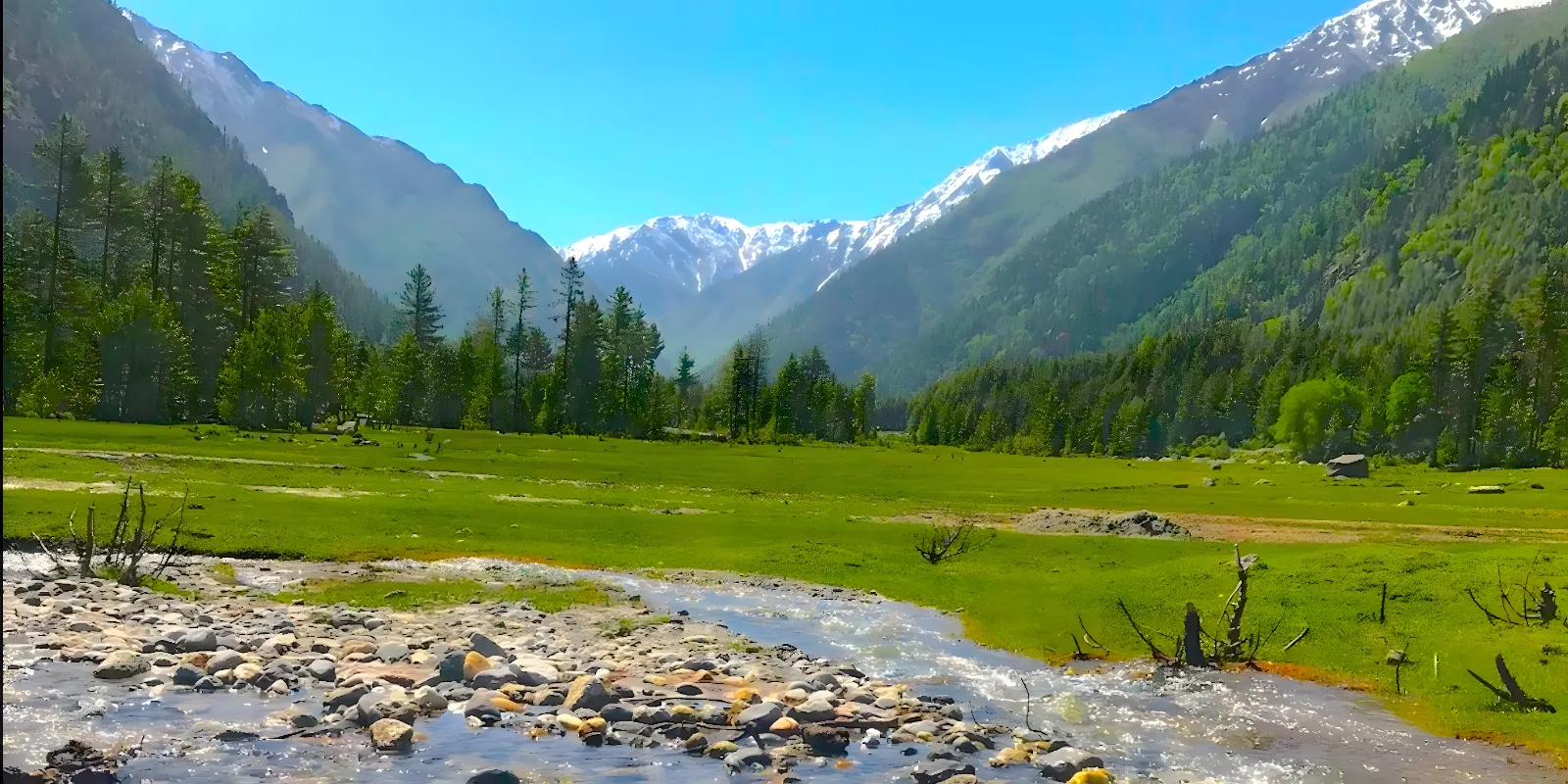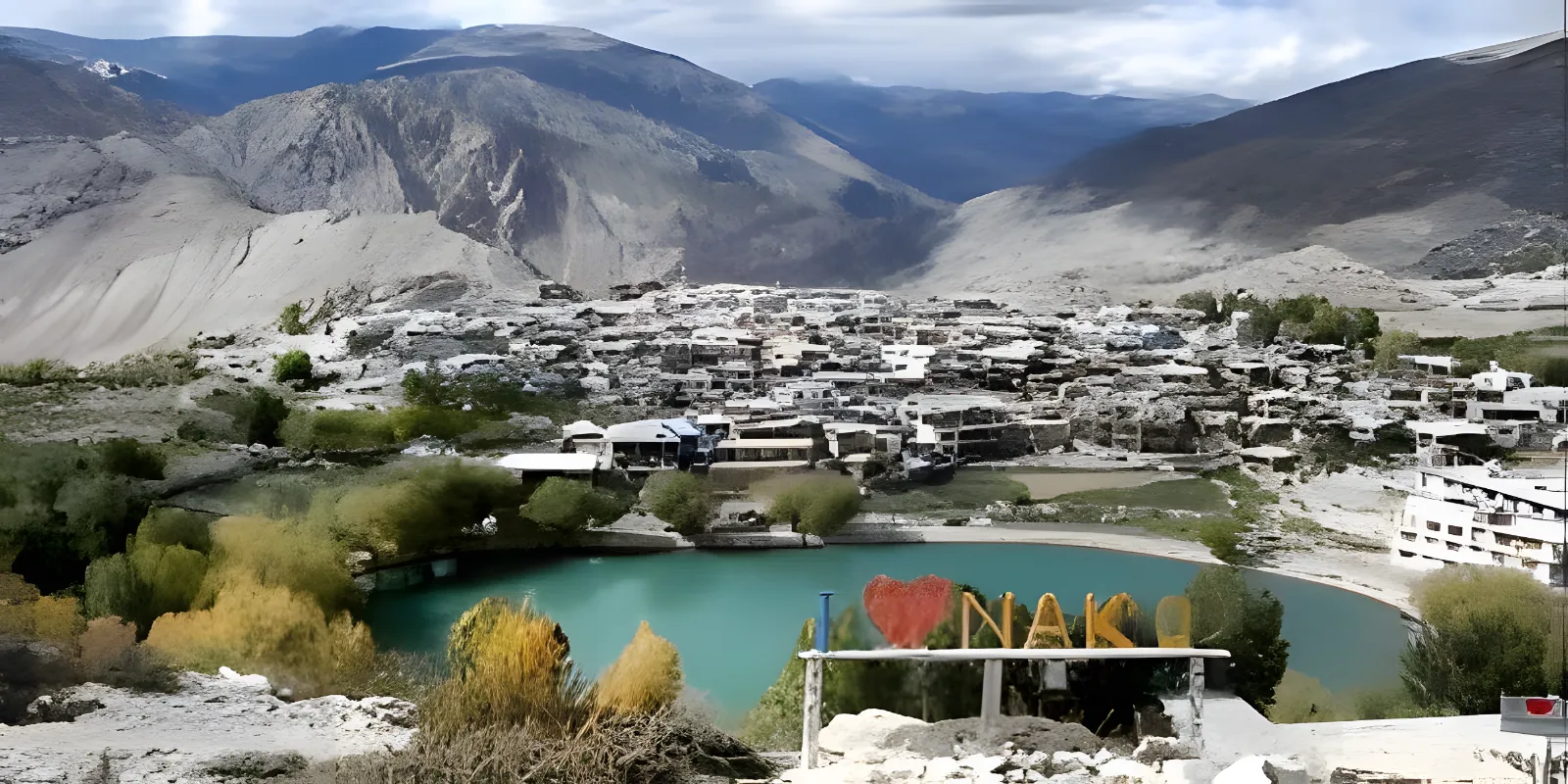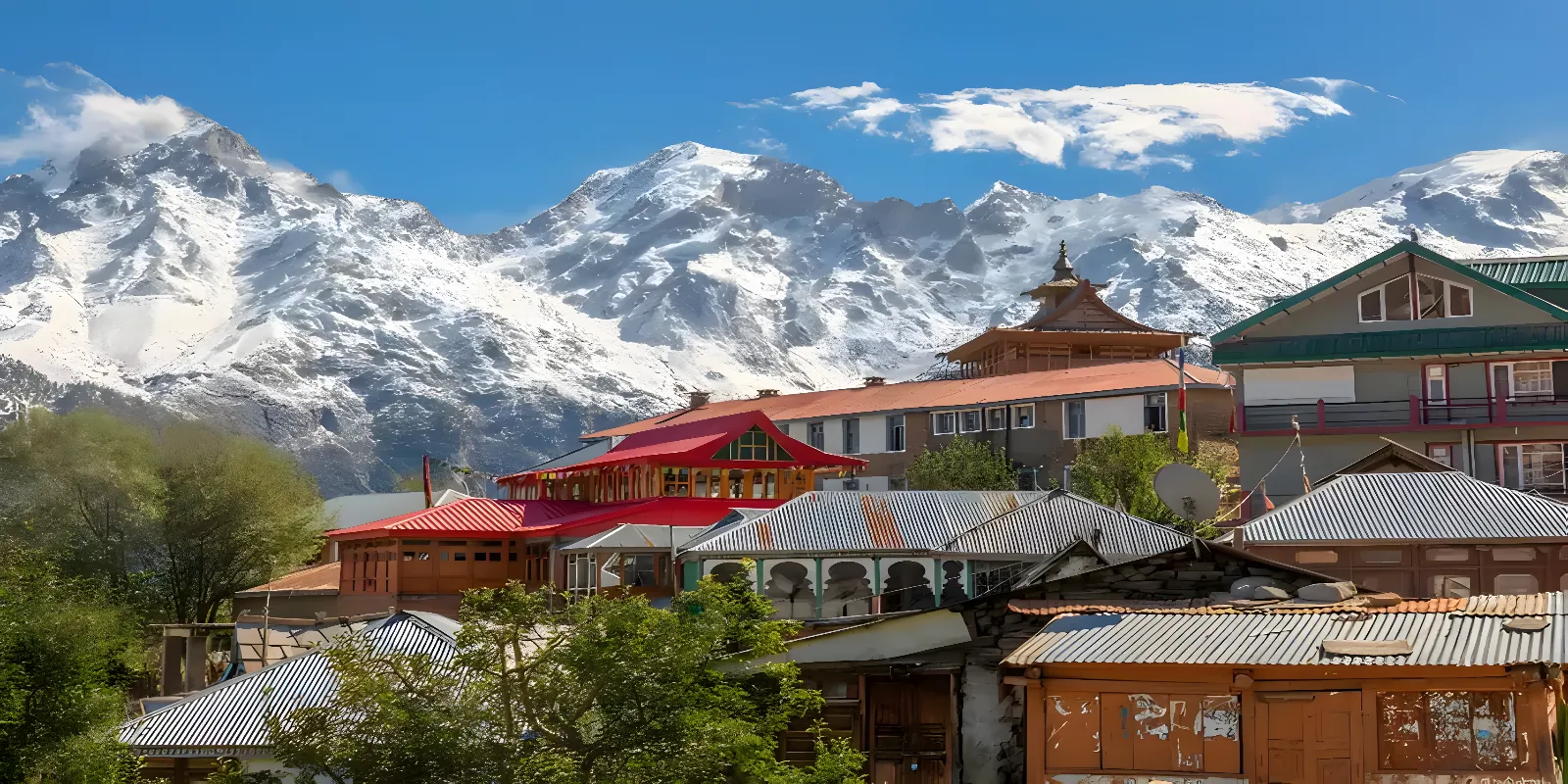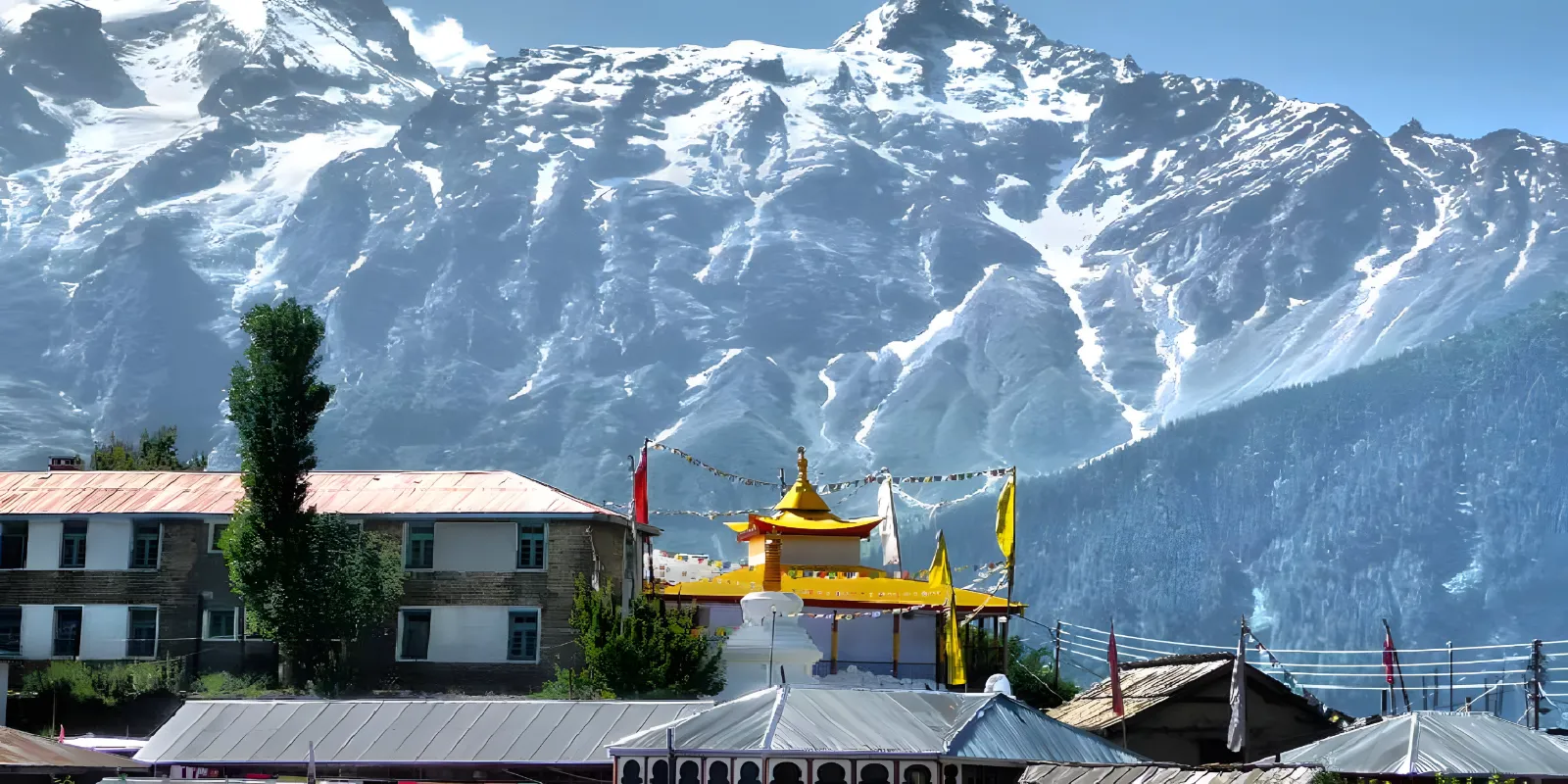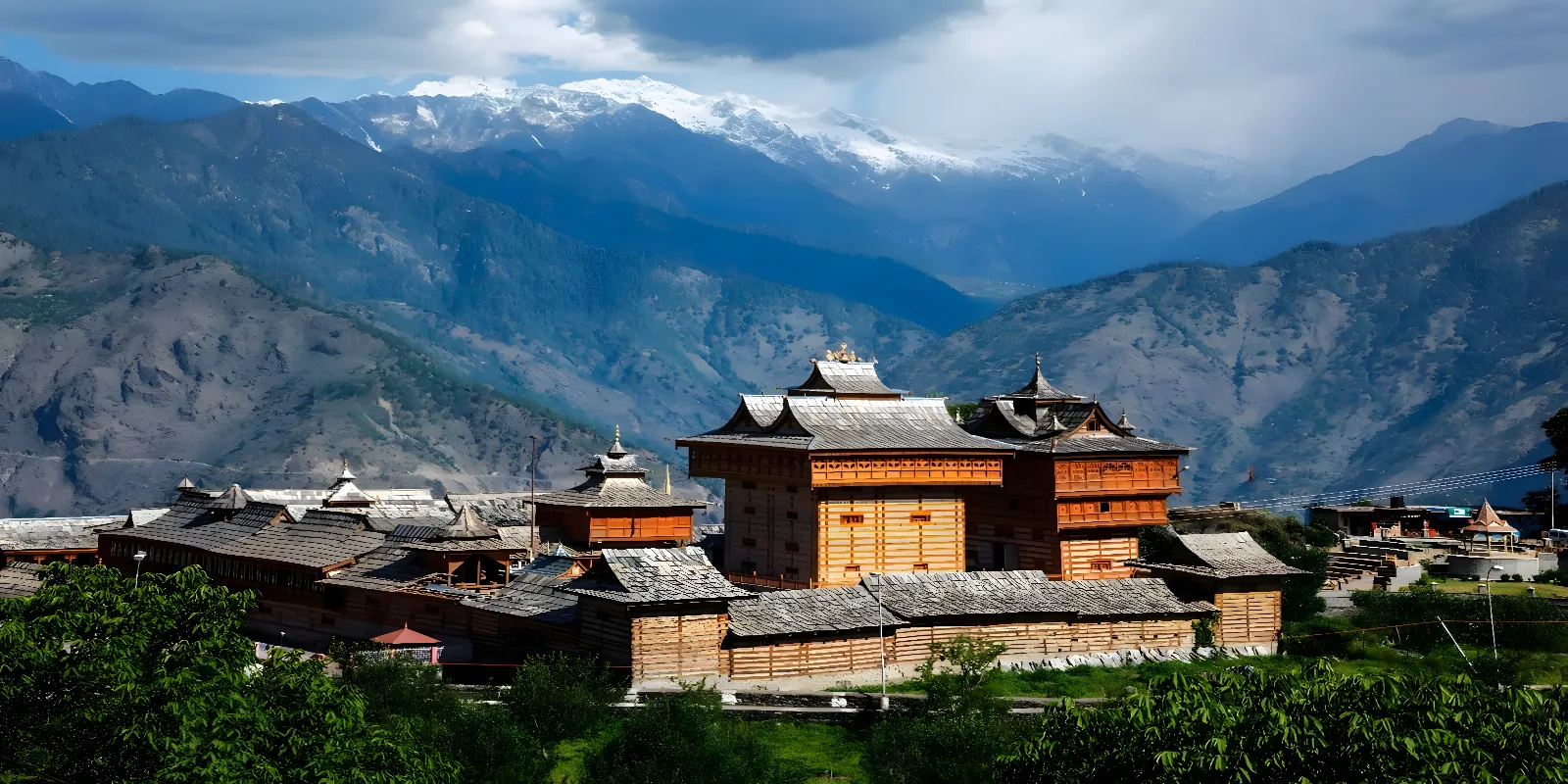As we keep going, we reach this lovely village of Kalpa, located near the holy Kinnaur Kailash mountain. This small village is located near the mountains, making it seem like it was built to showcase the beautiful views of these peaks. There is no need for a car or bike to travel around the village. You can explore the entire village on foot. Once in Kalpa village, you don’t feel like you are in a remote place with no people around, nor do you feel like you are in a crowded area filled with a rush. It has a peaceful and calm atmosphere with beautiful views. Kinnaur apples are famous for their quality and taste. There are many apple orchards in Kalpa. Another village, Nako, located 100 km from Kalpa, lies just before the start of Spiti Valley and is the highest village in Kinnaur. Located at an altitude of 12,000 feet, this village is home to only 600 residents. Even though Nako is in Kinnaur, it is entirely different from Kalpa. The green landscapes give way to desert terrain, and the wooden houses are replaced by mud houses. The cluster of mud houses here resembles an ancient fort. From Nako, you can enjoy a view of Reo Purgyil, the highest peak in Himachal. It stands at an altitude of over 22,000 feet. On one side of the village lies Nako Lake, which is considered a sacred and holy site. After a short trek from the lake, we reach the highest point, where a Buddhist temple stands. It is believed that this temple protects the entire village. From here, we can view the entire Nako village. The location of Nako is very close to the Tibet border. There is a lack of oxygen, population, and facilities here. Next on our list is Sangla Valley, located 250 km from Shimla. It is one of the most beautiful valleys in Himachal Pradesh. The last village, Chitkul, is located here near the border of Tibet. At an altitude of 11,000 feet, you can not only visit the last village in India but also breathe the cleanest air in the country. The forests here play a major role in cleansing the air. With a population of 800, you can find houses made from the wood of local trees. The houses here are constructed of wood and slate roofs. The most beautiful spot among these wooden houses is Chitkul Fort which stands tall in the middle of the village. The water mill in Chitkul, Himachal Pradesh, is known as a Gharat and represents a centuries-old traditional method of grinding flour. The Gharat utilizes running water to grind grains such as wheat, rice, and maize. Flour produced by a Gharat is considered healthier because the grinding process is slow and gradual. The village's greenery changes completely in winter, as heavy snowfall blocks the roads leading to it. This village remains disconnected from the world for several months. Due to this, the villagers relocated to another village located 10 km below Chitkul during this time. This village, known as Rakcham and famous for its connection to Baspa Valley, is located very close to Baspa Valley. On one side of the river lies this village, while on the other side, beautiful fields spread far and wide. The Rakcham Bridge connects these two sides. Before this iron bridge was built a few years ago, an old cable system and swing were used to cross the river. Most of the year, except during the monsoon season, this river is calm, with crystal-clear water. It’s a small village with a few houses but very beautiful. The greenery and peaks here are exceptionally beautiful. Besides farming, the villagers also make ropes from goat hair. Another village, located 1 km from Sangla, is Kamru Village. It is located on the foot of Kinnaur Kailash. After a short trek to Kamru, you'll find traditional-style houses. Atop all the houses stands Kamru Fort. Two paths lead to the fort. Kamru Fort is a seven-storey building. The bottom two storeys are made of stone, while the upper five storeys are constructed entirely of wood. Only the priest is allowed inside the main fort. Within the fort, there are many weapons and ammunition used by former kings. These artifacts will soon be displayed in a museum that is currently being built outside. Sarahan is another village located near Kinnaur. Known as the "Gateway to Kinnaur," it sits close to the Sutlej River Valley and the Indo-Tibetan road, at an altitude of 2,165 meters above sea level. This village, known for its apple orchards, pine and deodar forests, streams, farms, and slate-roofed houses makes it beautiful. The stunning peaks on one side and the valley alongside Srikhand Mahadev Peak make Sarahan a memorable place. The limited population of the village makes it peaceful and serene. At the center of the village is the remarkable two-towered Bhimakali Temple, dedicated to the local version of Devi Kali. The Bhimkali Temple, one of the 51 Shakti Peethas dedicated to Devi Shakti, is the heart of the village. Close to the Bhimkali Temple, is the Sarahan Bird Park, home to the state bird Jujurana and other local birds. It is closed during summer for breeding. About 50 km from the village, Bhabha Valley is next to the Bhaba River and has beautiful views with a lake and grassy meadows. It's also the starting point for treks to Pin Valley in Spiti. A visit to Sarahan isn't complete without seeing the scenic Shrikhand Peak, which has a temple of Lord Shiva nearby, as legend says Lord Shiva meditated at this location. Hawa Ghar is a charming little sitting area built under tall trees that offers stunning views of the high peaks and deep valleys. Sarahan serves as a base for many trekking adventures in the area and was once the summer capital of the rulers of Bushahr, who lived in Kinnaur.
